Idea by
Giulio Margheri and Roel van Herpt
RULIO
Call for ideas 2018
МКАД CITY
МКАД CITY

The MKAD, a 109km ring road for redirecting incoming traffic toward the city of Moscow, is the most important physical and mental border of the city. This ring is the element that separates Muscovites from people living outside the city.
Designed in 1930 and modified over the years, this border road transformed from an instrument for traffic circulation into a heavily congested destination in itself. Since the collapse of the USSR, many car services, retailers, megastores and leisure centers appeared along the MKAD. A post-Soviet city has been arising and is expected to grow further.
The MKAD City project investigates the development of this border city through time, and the culture that the car has created around it: a multitude of people, places, and landscapes, all connected through a ring road. The project envisions the future MKAD as an urban boulevard. A series of strategic interventions are proposed to reinforce the border city’s unique features and its diverse
environment.

MKAD: a contemporary equivalent of Benjamin’s arcades
“Trade and traffic are the two components of the street. Now, in the arcades the second of these has effectively died out: the traffic there is rudimentary. The arcade is a street of lascivious commerce only; it is wholly adapted to arousing desires.” Walter Benjamin, The Arcades Project, 1940
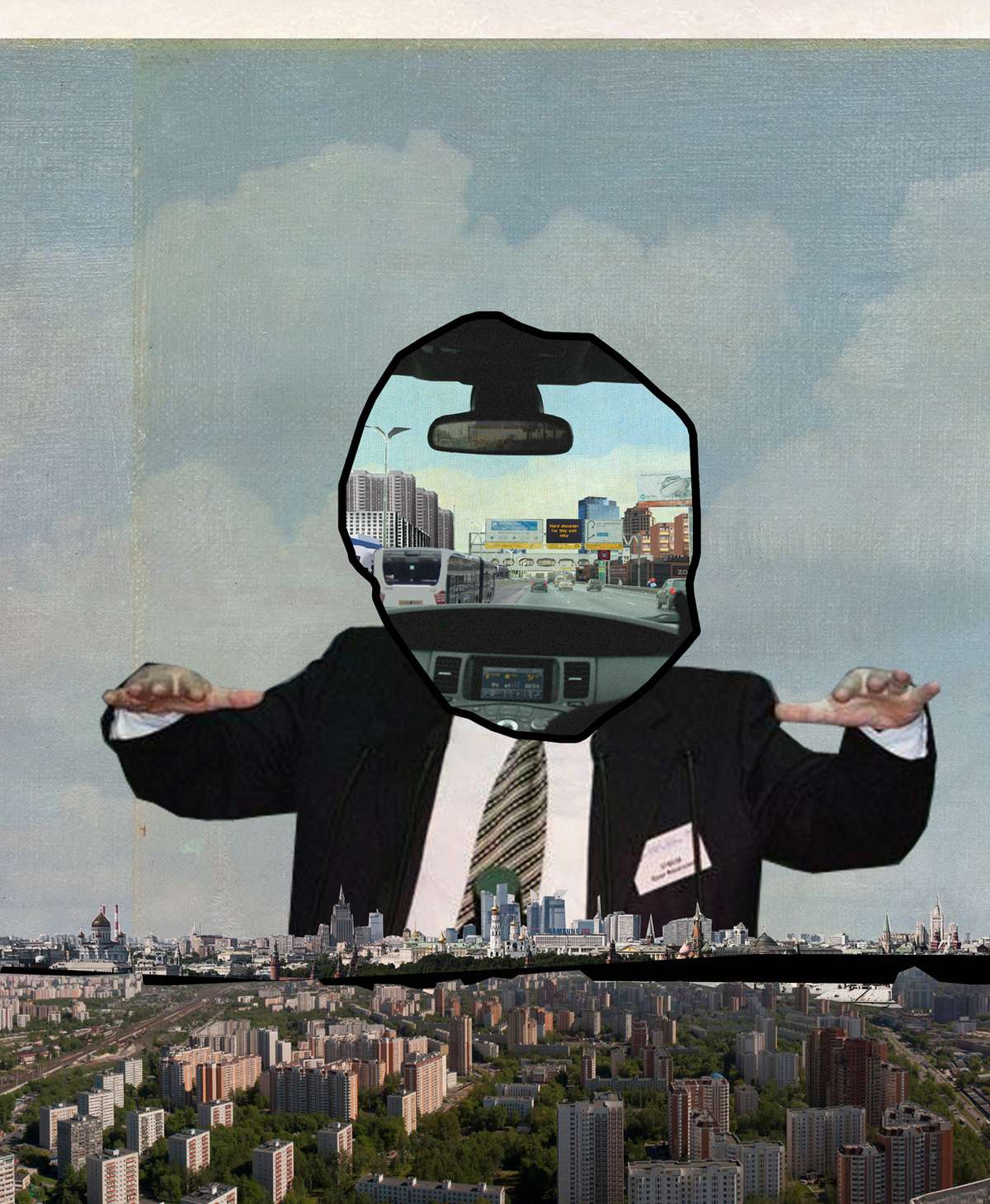
Developments not only happened inside the MKAD border.
As land prices in Moscow Oblast have been lower than those in the city of Moscow, many large development projects along the MKAD took place on its outside. As a result, the city grew outside its official border.
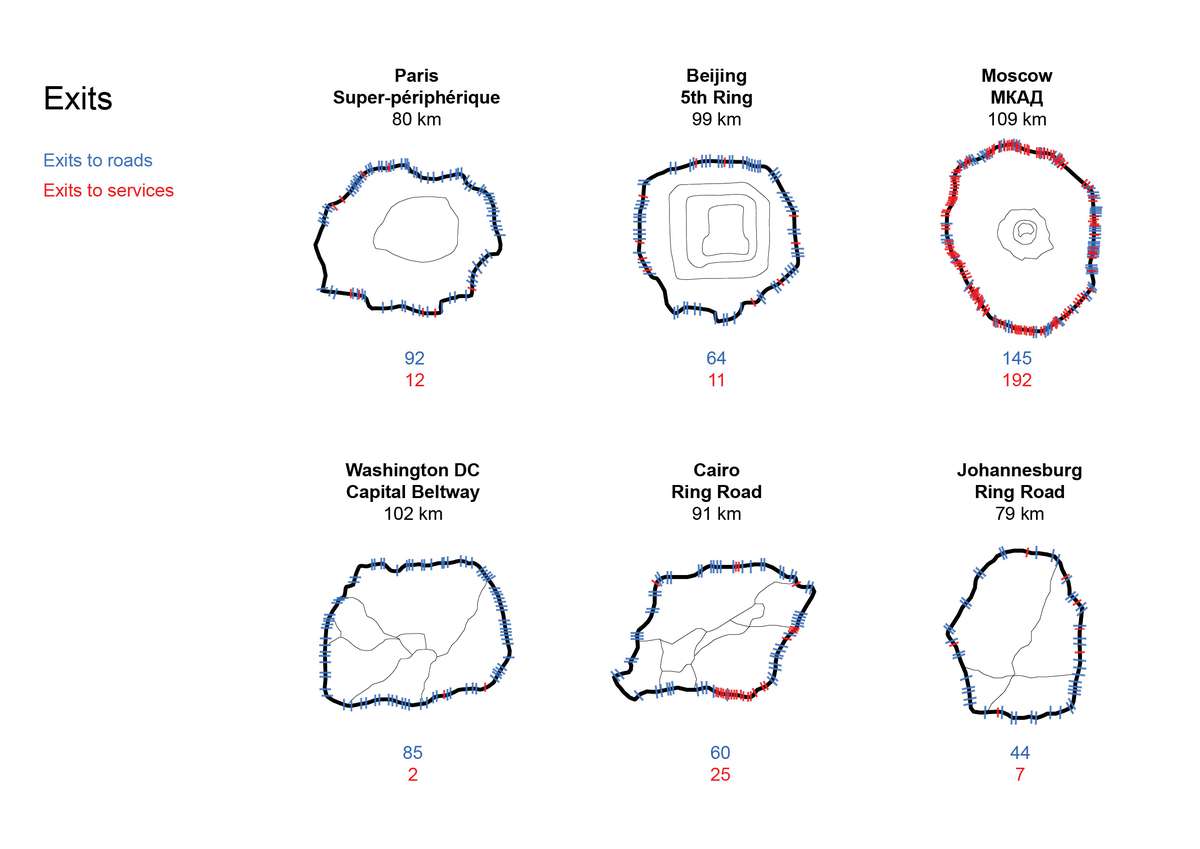
MKAD exits. Compared to similar ring roads around the world, the MKAD on average 14x more direct exits to services per kilometer.

MKAD destination development. Until the collapse of the USSR, the MKAD had just a few services, mainly petrol stations, after the USSR, more and different services, including retail and hotels, start to appear. After 1997, when the MKAD was enlarged, the amount of services start to increase rapidly. The first megastores and offices arrived. Nowadays the MKAD is full of services.
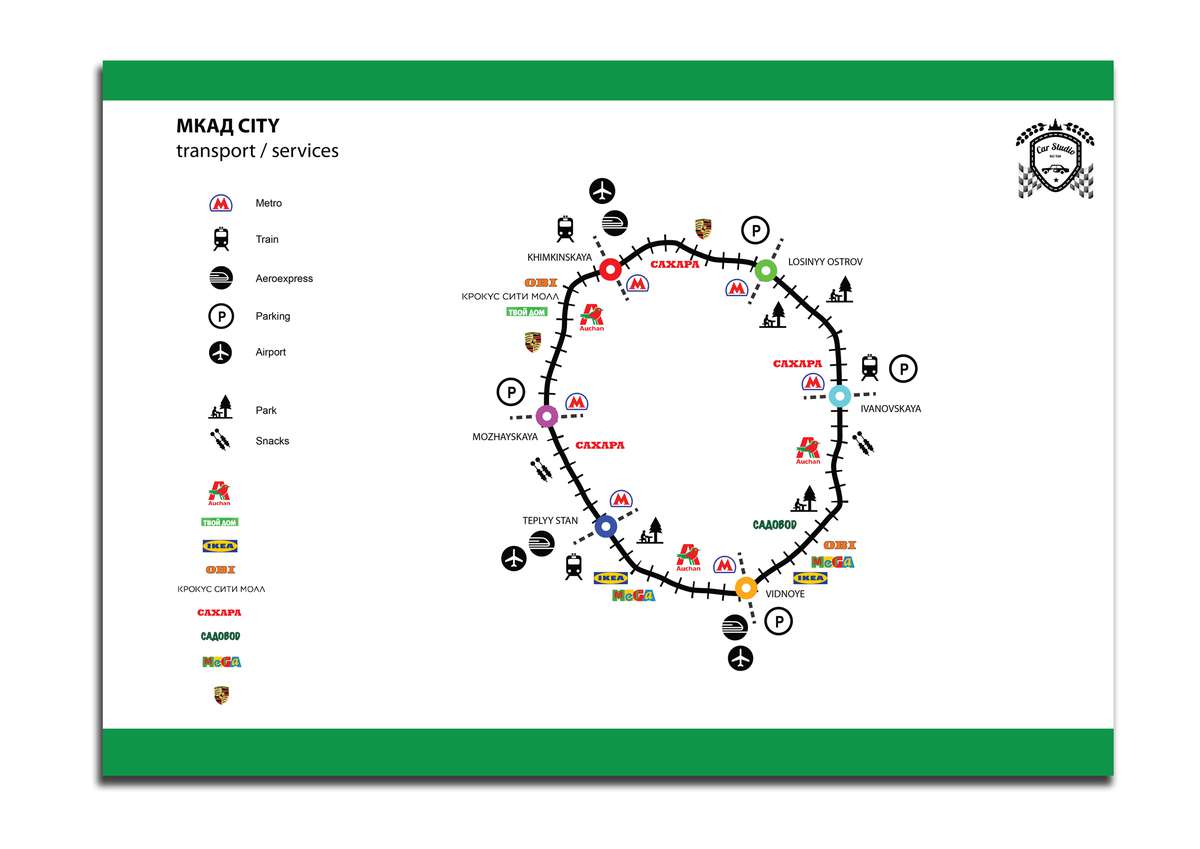
MKAD future. The exponential growth of the services next to the road make possible to envision the future MKAD as an urban boulevard. This vision will be possibile increasing the capacity and the accessibility of the road, in order to
reinforce its unique character.
МКАД CITY
МКАД CITY

The MKAD, a 109km ring road for redirecting incoming traffic toward the city of Moscow, is the most important physical and mental border of the city. This ring is the element that separates Muscovites from people living outside the city.
Designed in 1930 and modified over the years, this border road transformed from an instrument for traffic circulation into a heavily congested destination in itself. Since the collapse of the USSR, many car services, retailers, megastores and leisure centers appeared along the MKAD. A post-Soviet city has been arising and is expected to grow further.
The MKAD City project investigates the development of this border city through time, and the culture that the car has created around it: a multitude of people, places, and landscapes, all connected through a ring road. The project envisions the future MKAD as an urban boulevard. A series of strategic interventions are proposed to reinforce the border city’s unique features and its diverse
environment.
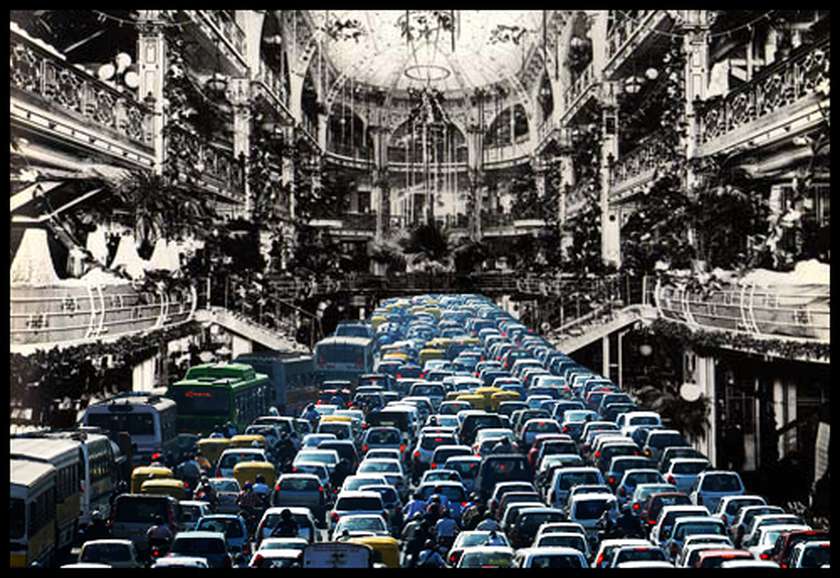
MKAD: a contemporary equivalent of Benjamin’s arcades
“Trade and traffic are the two components of the street. Now, in the arcades the second of these has effectively died out: the traffic there is rudimentary. The arcade is a street of lascivious commerce only; it is wholly adapted to arousing desires.” Walter Benjamin, The Arcades Project, 1940
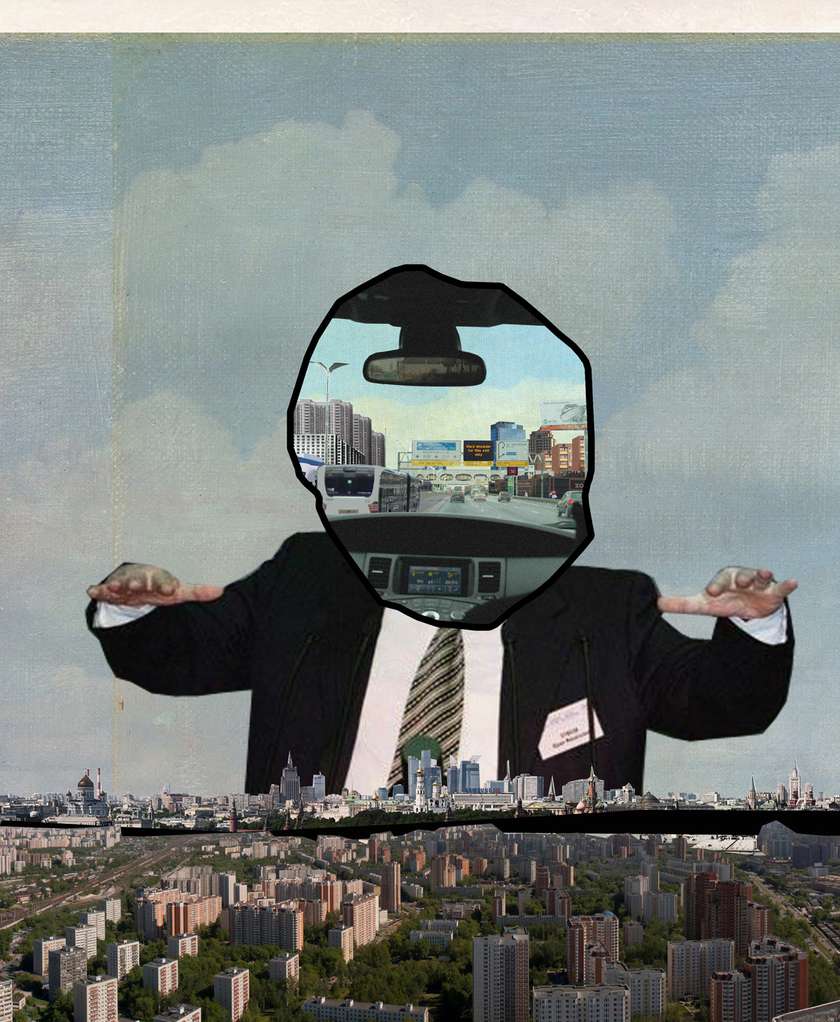
Developments not only happened inside the MKAD border.
As land prices in Moscow Oblast have been lower than those in the city of Moscow, many large development projects along the MKAD took place on its outside. As a result, the city grew outside its official border.
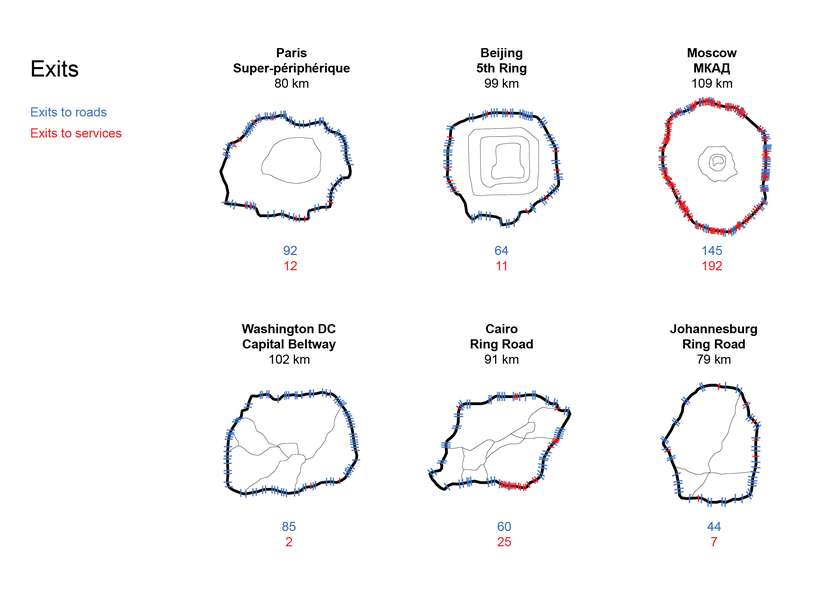
MKAD exits. Compared to similar ring roads around the world, the MKAD on average 14x more direct exits to services per kilometer.
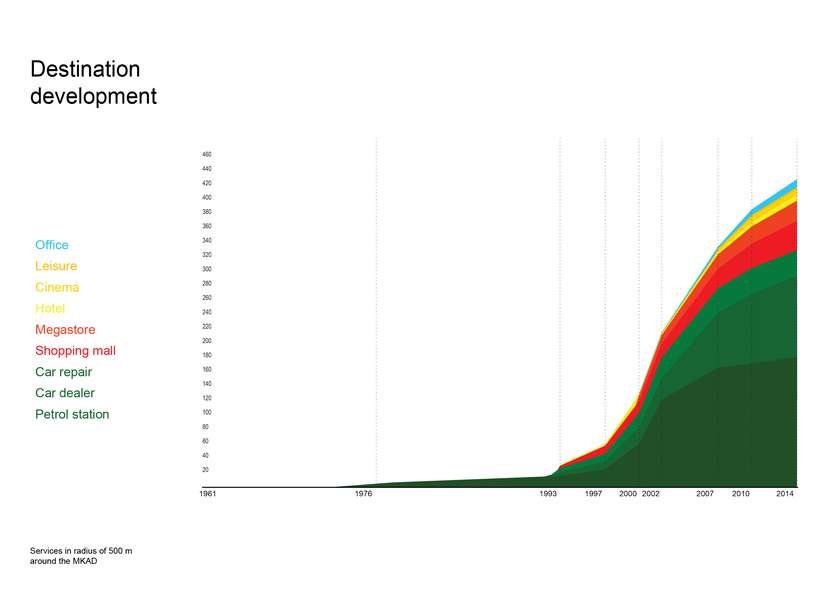
MKAD destination development. Until the collapse of the USSR, the MKAD had just a few services, mainly petrol stations, after the USSR, more and different services, including retail and hotels, start to appear. After 1997, when the MKAD was enlarged, the amount of services start to increase rapidly. The first megastores and offices arrived. Nowadays the MKAD is full of services.
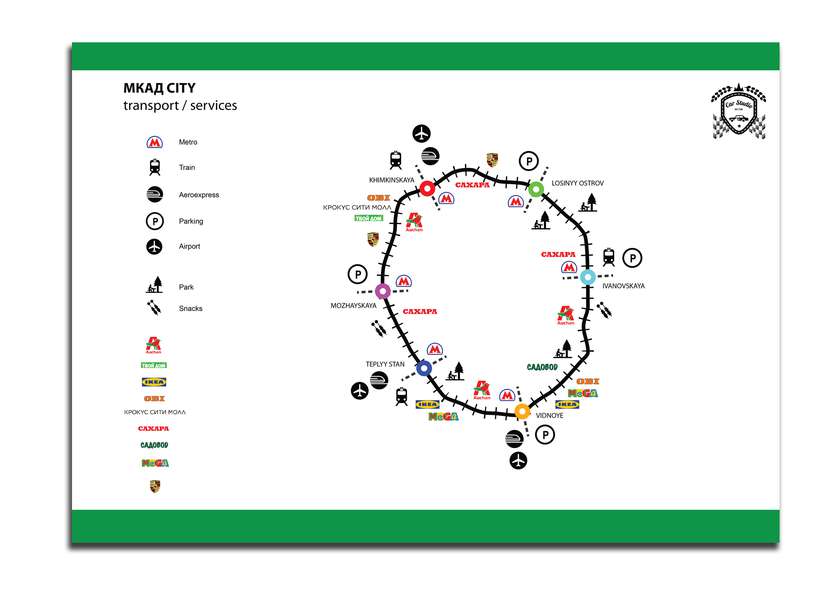
MKAD future. The exponential growth of the services next to the road make possible to envision the future MKAD as an urban boulevard. This vision will be possibile increasing the capacity and the accessibility of the road, in order to
reinforce its unique character.